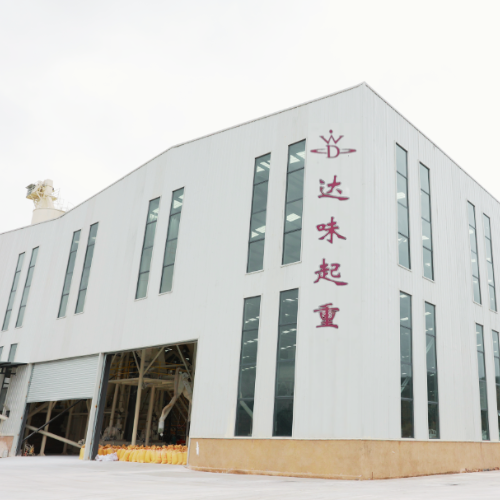adjustable gantry
The Evolution and Advantages of Adjustable Gantries in Modern Construction
In the dynamic realm of construction and engineering, the demand for efficient, adaptable, and durable equipment is ever-increasing. One such innovation that has gained considerable popularity is the adjustable gantry. This versatile structure not only enhances the efficiency of construction projects but also ensures safety and flexibility in operations. With this article, we will explore the evolution, advantages, and applications of adjustable gantries in the modern engineering landscape.
Understanding Adjustable Gantries
At its core, an adjustable gantry is a framework designed to support the movement of materials, tools, or components during construction. Its adjustable nature allows it to adapt to various heights and widths, making it suitable for a multitude of tasks, from lifting heavy loads to providing overhead support in confined spaces. Traditionally, gantry systems were static, limiting their usability. However, the advent of adjustable gantries has revolutionized how projects are executed, providing solutions to many of the limitations posed by fixed systems.
Evolution of Adjustable Gantries
The concept of gantry systems can be traced back to the early days of construction, where cranes and simple hoisting systems were utilized for lifting and moving heavy materials. Over time, as construction techniques advanced, there was a need for more adaptable and flexible lifting solutions. The introduction of adjustable gantries emerged as a response to these evolving needs.
Initially designed for specific tasks, manufacturers began to recognize the potential for versatility. Adjustable gantries began to incorporate features that allowed for height and width modification, enabling them to serve a wider range of applications. Advancements in materials science have also contributed to their evolution, with modern gantries crafted from lightweight yet robust materials like aluminum and high-strength steel. This progress has made them more portable, durable, and capable of bearing heavier loads sustainably.
Advantages of Adjustable Gantries
1. Flexibility One of the most significant advantages of adjustable gantries is their inherent flexibility. They can be tailored to fit the specific requirements of a project, whether it’s for lifting heavy machinery, assembling large structures, or maneuvering through tight spaces. This adaptability not only saves time but also maximizes efficiency on job sites.
adjustable gantry

2. Safety Safety is a paramount concern in construction. Adjustable gantries enhance safety by providing a stable lifting point and reducing the risk associated with unsafe lifting practices. By allowing operators to adjust the height and width, these systems help prevent accidents caused by improper lifting angles or unstable loads.
3. Cost-Effectiveness Investing in a single piece of equipment that can be adjusted according to various needs proves economically beneficial. Instead of purchasing multiple lifting systems for different tasks, contractors can utilize an adjustable gantry across multiple projects, reducing equipment expenses and maintenance costs.
4. Ease of Use Modern adjustable gantries are designed with user convenience in mind. Many come equipped with easy-to-use mechanisms that allow for quick adjustments. This ease of operation helps reduce the time spent setting up equipment and enables workers to focus on the job at hand.
5. Engineering Advancement The engineering behind adjustable gantries has seen substantial improvement. Advanced engineering solutions, including smart sensors and automated adjustments, have made these systems even more efficient and user-friendly. Innovations such as remote control operation further enhance their usability on challenging job sites.
Applications in Various Industries
The applications of adjustable gantries are vast and versatile. In the construction sector, they are used for erecting buildings, bridges, and complex structures requiring precise lifts. The manufacturing industry utilizes them for assembling heavy machinery and components. They are also prevalent in maritime applications, where they aid in loading and unloading cargo from ships. Furthermore, adjustable gantries are crucial in maintenance operations for aircraft, vehicles, and industrial machinery, allowing easy access for repairs.
Conclusion
The adjustable gantry is a testament to the advancements in construction technology, combining flexibility, safety, and cost-effectiveness. As the construction landscape continues to evolve, the role of adjustable gantries will undoubtedly expand, paving the way for safer and more efficient work environments. Embracing such innovations is essential for meeting the demands of modern engineering and construction. Whether on a bustling construction site or a quiet manufacturing floor, adjustable gantries represent a significant leap towards a more adaptable and efficient future in the industry.
-
Unlock Seamless Relocation with Our Heavy Equipment Moving ExpertiseNewsJun.06,2025
-
Unleash Unrivaled Flexibility with Our Adjustable Gantry CraneNewsJun.06,2025
-
Unleash Heavy-Duty Efficiency with Our Industrial Gantry Crane SolutionsNewsJun.06,2025
-
Revolutionize Steel Handling with Our Magnetic Lifter RangeNewsJun.06,2025
-
Master Equipment Mobility with Premium Machinery Mover SolutionsNewsJun.06,2025
-
Elevate Your Material Handling with Magnetic Lifter TechnologyNewsJun.06,2025
-
YS Permanent Lifting Magnets: The Smarter Way to Handle SteelNewsMay.22,2025
